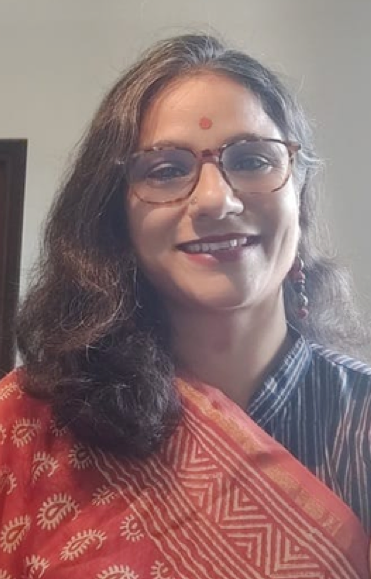Media and Teen Minds
- Student Journalist
- May 25, 2023
- 4 min read
"16-year-old boy resorts to fake kidnapping to get money to buy a cell phone." "Reels queen kills herself after parents tell her to study." Reports seem to suggest that media’s impact on teenagers in India is only negative. But is that really the case? Let us find out.
Types of Media that impact teens It is a commonly held view that social media is the only type of media that influences teenagers. However, it has been observed that movies, TV shows, news and video games all have profound impacts on teenagers’ lives.
Movies and serials shape youngsters’ perceptions of many things. For example, many Western shows glorify substance abuse, leading to many youngsters believing that it is acceptable. Video games are creating addicts daily, with some adolescents becoming violent and unstable. And yet numerous teenagers turn to their favourite television shows and movies to curb stress, and video games are also popular among friend groups as a method of socializing.
When it comes to news, printed newspapers are no longer popular among English-speaking Indian teenagers, showed the Oxford University's Reuters Institute India Digital News Report. Half the respondents said that they get some news from social media, and a quarter said it was their main source.
Social media is widely used in India, showed a study by the Global Web Index, with almost 450 million users. In Indian teenagers, WhatsApp and YouTube remain the most popular, with 80 per cent and 70 per cent using them respectively. Instagram and Facebook are much less popular, with about 50 per cent and 30 per cent each respectively.

Ways in which teens are impacted Teens are impacted in many ways by these media, both positive and negative. For some, the negative outweighs the positive and for others, the positive outweighs the negative. While films and TV shows promote substance abuse and impossible beauty standards, they have their pluses too. Many teenagers have a ‘comfort’ television show or movie that they watch in times of stress and anxiety. Teenagers often binge-watch their preferred shows during emotional times. These media provide a refuge for many, without which they may be vulnerable.
The same is true with video games. While some studies hint at a correlation between video games and violence, there is no evidence that they do. A study by the Entertainment Software Association showed that over 70 per cent of games play with other people, and the majority of gameplay is non-violent. Many gamers use their time online to relax and build their friendships with peers.
Diverse views on Media and its impact Given the wide-ranging impact of media on teenagers, we decided to gather some views from a child psychologist and a teenager.

Sonal S. Raja is a practising clinical psychologist. Her work is in the area of the well- being of children through the involvement of adults around them. She consults with schools and organizations on mental health, work-life balance and parenting, inclusion and diversity. She runs Socio-Emotional Learning workshops for students to enhance their well-being and engagement in personal, social and academic engagements. Sonal has been working in the area of well-being for the past twenty-three years. She is a trained Clinical Psychologist, from the USA. Shreya Rajesh is an 18-year-old who will be beginning her legal education at the National Institute of Juridical Sciences, Kolkata this year.
Shreya offered an interesting perspective on movies and television shows. She said that while these can be a welcome escape for teenagers, they give a very skewed view of certain things.
For example, she said,
“In shows and movies, teens can be seen partying every night, drinking and doing drugs, while in reality, most teens don’t regularly participate in these activities. You grow up with an expectation of teenage life, which isn’t really accurate.”
According to Sonal, the overall impact of media on teenagers is negative. “Social media leads to a lot of comparisons, which can lead to negative feelings,” she stated. She further elaborated that anxiety and lack of body confidence, are common in teens, especially among girls. Being on social media also leads to a certain discontent in teenagers about their lives, as they are constantly shown people their age who are smarter, more capable, richer and better looking.
This displeasure grows, as the teens never act to change their situation, merely stewing. Our teenage correspondent agreed to a certain extent. However, she also offered a very different perspective.

Shreya explained,
‘’Many teens often feel alone - especially those identifying as LGBTQIA+. It helps to know that there are others like them out there, going through the same struggles. Just going through the comments sections of such posts shows the solidarity that many teenagers find comforting."
She added that post the lockdown, there has been a massive surge in content debunking celebrity posts, showing the different angles and filters which they use to modify their appearance. Such posts help teens understand that what is shown online is not always reality.
We asked Sonal if impact on teenagers varied. She explained that girls are typically affected more by social media, while boys are affected more by video games. Children between the ages of 14 and 17 are the most susceptible to the various types of media influence. On a different note, she also commented on the “equalising effect” of media in recent years, as everyone now has access to the same information. Institute of Governance, Policies & Politics (IGPP) in association with Social Media Matters (SMM) and Youth Online Learning Organization (Yolo) conducted a survey on “Patterns of Internet Usage Among Youths In India.” According to this study, 85 per cent of non-adult users have access to a smartphone. This points to a positive impact of media in terms of increased access to information for teenagers.
Overall, media has many faces. In this piece, we have covered many things, from the various types of media to the impacts of the same on Indian teenagers. We hope that this article has given you a fresh perspective on media. Media has become a force to reckon with as far as teenagers are concerned - for good or bad may still be decided.

This feature story has been written by a student journalist as part of the April'23 cohort of the Re-Imagining Media Program.



Comentarios